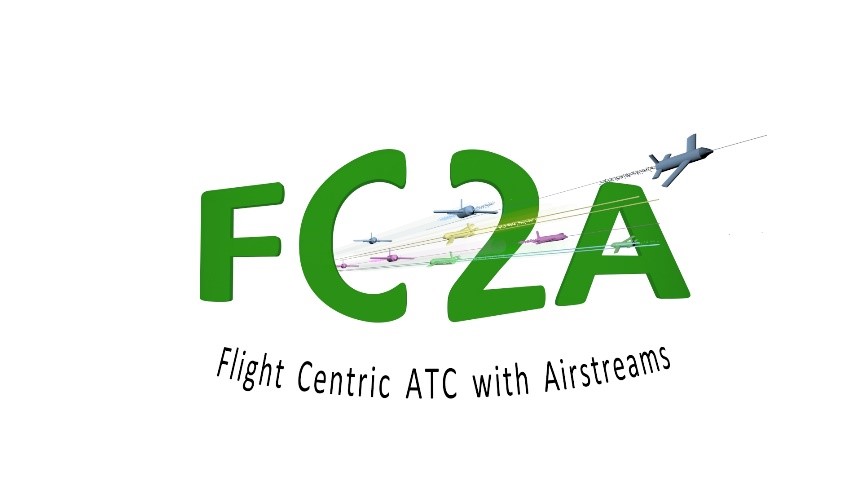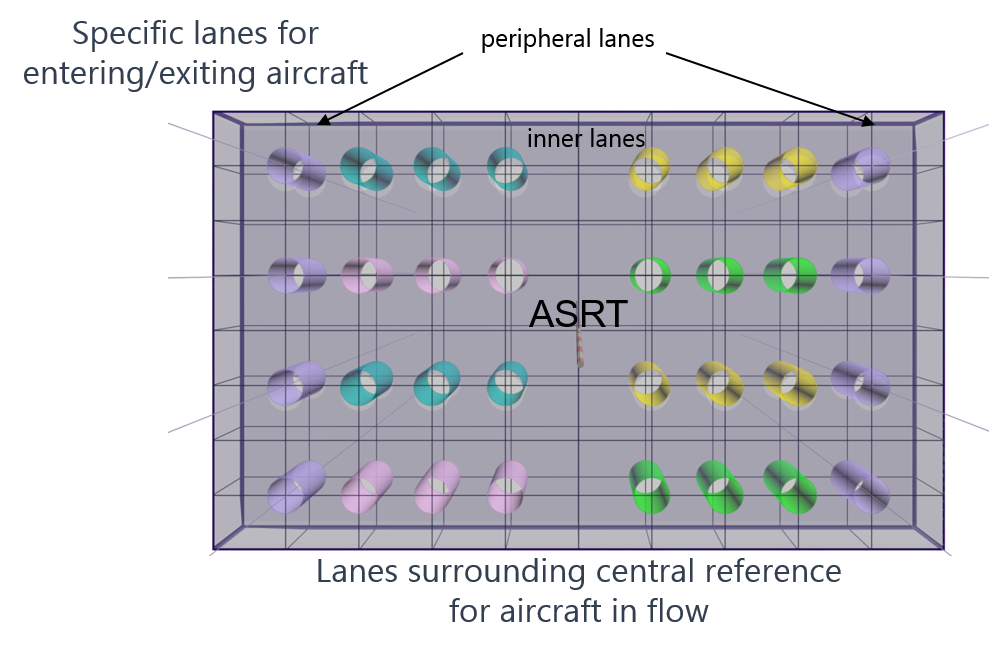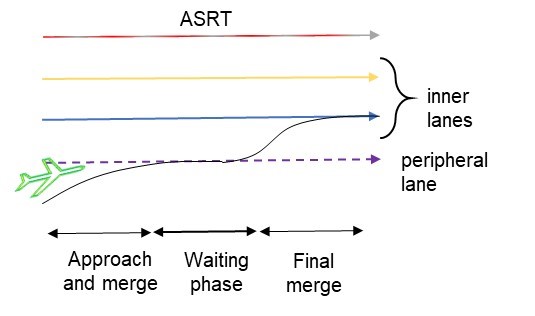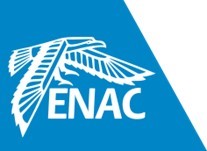

Flight Centric ATC with Airstreams (FC2A)
The project is part of KTN-Engage initiative and represents the initial step for the development of an alternative way to manage the user demand. The aim is to meet the initial demand of airlines to fly the most direct flight possible between city pairs and limiting the complexity associated with pure free route while being more efficient than a network of conventional predefined routes. The approach addresses an environmentally friendly and more agile ATM framework by combining Flight Centric ATC (FCA) and Airstream concepts.
The network of Airstreams, similar to flow corridors, is built dynamically using the daily demand of the airspace users.
An Airstream is defined as airspace, generally long and narrow, intended for use by aircraft which desire to travel efficiently from one end of the corridor to the other, with minimal interference from all other traffic, same direction, opposite direction and crossing traffic. Three of the prominent attributes of Airstreams that would distinguish them from today’s airways are:
- Allowance for multiple (parallel) lanes of traffic;
- Capitalization on advanced communication, navigation, and surveillance technology to enable changes in methods of separation, such as self-separation, potentially reduced separation standards within the corridor, or employ flight in formation;
- Dynamic activation rules to add or remove corridor structures, as needed, throughout the day.

Each aircraft is supposed to remain in the center of a moving spatial slot which follows a lane, however support to maneuvers are provided. This mechanism is totally dynamic and applied each day to generate the structure fitting to the airspace users preferred routes and ATFCM considerations
The approach proposes to organize main traffic flows along Airstreams which are characterized by a three-dimensional (3D) common reference track and lateral lanes combined with a dynamic slot structure. A common spatial reference, the Airstream Reference Track (ASRT) is introduced as a geometric guideline of the corridor configuring an Airstream. The adoption of such spatial reference will ease the on-board traffic separation task, within an orderly traffic along this 3D reference.


In the context of Airstreams, the DAC concept allows to define the corridors according to the demand and take into consideration the various constraints. Airstreams have no predefined dimensions (width, height or radius) and their section will depend upon the number of lanes attached to the ASRT. The Airstream may present turns and may be changed according to the constraints. By that means, Airstreams are among the best media to the DAC optimization.
Simulation environment is developed to evaluate the Airstream infrastructure using six 2019 traffic samples (low, average & peak traffic) extracted from EUROCONTROL DDR2 and two modelling scenarios targeting 2030 horizon.
A bundling mechanism is applied on the demand for aggregating flights when pertinent and identify dominant flows which represent the ASRTs.
For bundling algorithms two approaches are developed by the project.
- The first one is using the trajectory provided by the airspace users (i.e. currently the filed flight plan). It is based on a smoothing spline expansion (currently cubic splines) then clustering by k-medoïds improved, if needed, with Expectation-Maximization (EM) algorithm.
- The second one is addressing the city pairs served by the demand and is focusing on the link rather than individual flights. An air link is associated to the loxodromic curve between the airports ap and ac and the number of flights on this path in a time window, whatever the direction is. From these air links, the clusters and the airstreams are built using a large-scale heuristic comparing all these links.
Air traffic is generally characterized by simple indicators like the number of aircraft flying over a given area, or the total distance flown during a time window.
These values may be used for estimating a rough number of air traffic controllers needed in a given control centre or for performing economic studies. However, this approach is not adapted to more complex situations, such as those encountered in airspace comparison or air traffic controllers training. An innovative representation of the traffic data, relying on a sound theoretical framework, is used in the project. Based on an extraction of local covariance, a grid with values in the space of symmetric positive definite matrices is obtained. It can serve as a basis of comparison or be subject to filtering and selection to obtain a digest of a traffic situation suitable for efficient complexity assessment.
FC2A participated to the KTN-ENGAGE Summer School 2020, virtual event from 21 to 25 September.


This project has received funding from the SESAR Joint Undertaking under the European Union’s Horizon 2020 research and innovation programme under grant agreement No 783287. The opinions expressed herein reflect the authors’ view only. Under no circumstances shall the SESAR Joint Undertaking be responsible for any use that may be made of the information contained herein.
